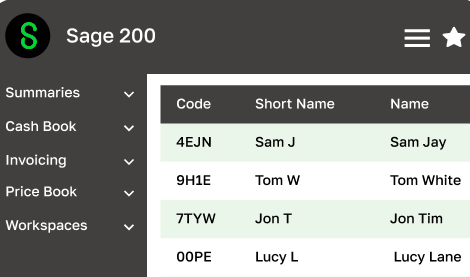If you are an avid user of Sage 200 you are probably familiar with the 4 key modules: Commercials, Project Accounting, Bill of Materials (BOM) and Business Intelligence. However, today we are taking a deeper look into Sage 200 Commercials, which is all about keeping every element of the supply chain accurate. It incorporates stock management, purchase order processing and sales order processing too.
Let’s have a look at some of the core features that you could be missing out on with Sage 200 Commercial.
1. Drop Shipping (part of the Sales Order Processing module)
If you don’t have the space to hold stock, drop-shipping is a much more feasible option for businesses that sell products. It removes the need for a warehouse, as stock is sent directly to the customer from the wholesaler.
Within the Commercial module, you can simply raise a Sales Order for an item that is delivered directly to the customer, and then raise a Purchase Order to go to your supplier. Of course you do need to remember to add the correct delivery address on the Purchase Order, otherwise you could find yourself in a bit of a pickle!
2. Analysis Code (in all modules)
Within Sage 200 there are all the usual data fields you would expect to see, such as those for customers, suppliers, stock items, and the ability to create reports based on these fields. However, there is also the option to create up to 20 additional analysis codes that are bespoke to your business. You could even create a report to see exactly how many sales an individual salesperson in your business has generated.
3. Batch & Serial Number Traceability (part of the Stock module)
If you are manually recording your invoices within your accounts package, then tracking product movements in excel, you really need to stop! With Sage 200 you can configure traceability to trace stock seamlessly, all within Sage 200. Starting with recording the product’s supplier numbers, you can link that initial product straight to the final customer with serial number traceability.
If you require extra functionality, there is even the option to set up additional attributes to give you added control over your stock. For example, if you have sell-by dates for your products these can be added as part of the traceability function.
4. Accruals (part of the Nominal module)
Keeping on top of finances is always important in business, and with Sage 200’s accruals feature you can easily account for anticipated expenses. This allows you to budget for incoming expenses in advance, rather than being faced with huge invoices that you didn’t expect. The accruals feature is incredibly useful for large utility bills, rent, insurance or any other bill that covers a large period of time.
By setting up the number of months you wish the expense to occur, Sage 200 will automatically post this on your Profit & Loss chart. All you need to do is post your bill to the relevant expense code each month, and Sage will sort the rest for you.
5. Generating Purchase Orders (part of the Purchase Order processing module)
Have you ever found yourself in a sticky situation where you haven’t got enough stock to cover incoming orders? The ‘Generate Purchase Orders’ feature within Sage 200 eliminates this as it allows you to keep on top of your current stock levels easily. You can set reorder levels on your warehouse products, so you never get low again. The usual supplier will be selected against the stock record, but if another supplier has the product at a better price, you have the option to choose that one instead.
As you can see, Commercials is an incredibly powerful tool that gives Sage 200 even more power. With added customisation, you really can tailor the modules to suit the needs of your business. If you would like any more information about Sage 200 or any of the enhancements, get in touch with Reality Solutions today. We are a Sage partner, dedicated to helping improve productivity and efficiency within businesses of all sizes.
*This article contains general information in order to assist all of our customers and is meant for guidance only – there are no guarantees that the information we provide will be suitable for your particular needs. If you require specific assistance, we recommend that you seek professional guidance on your individual circumstances. Reality Solutions are in no way responsible for any loss or damage arising from any information contained within our articles.



